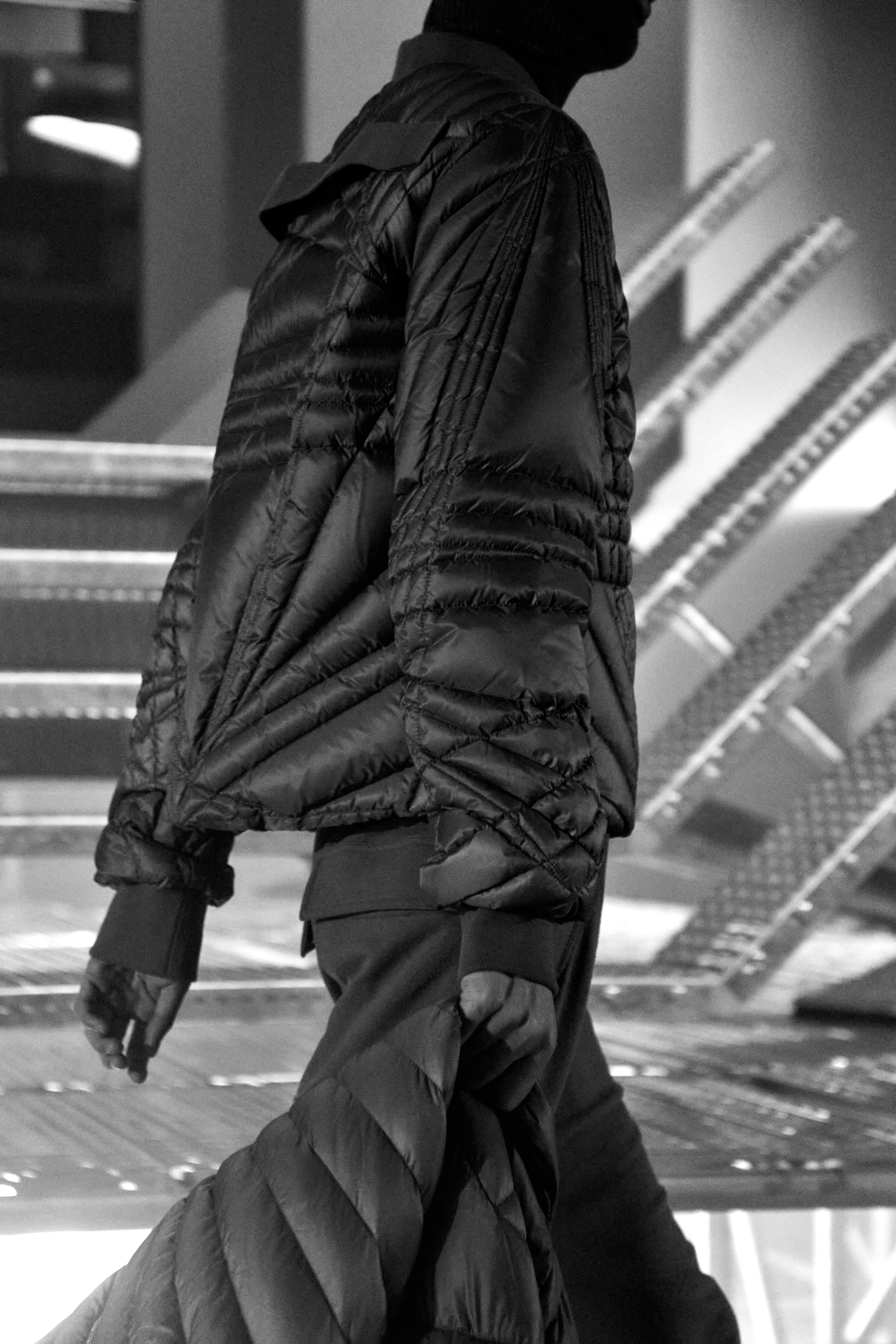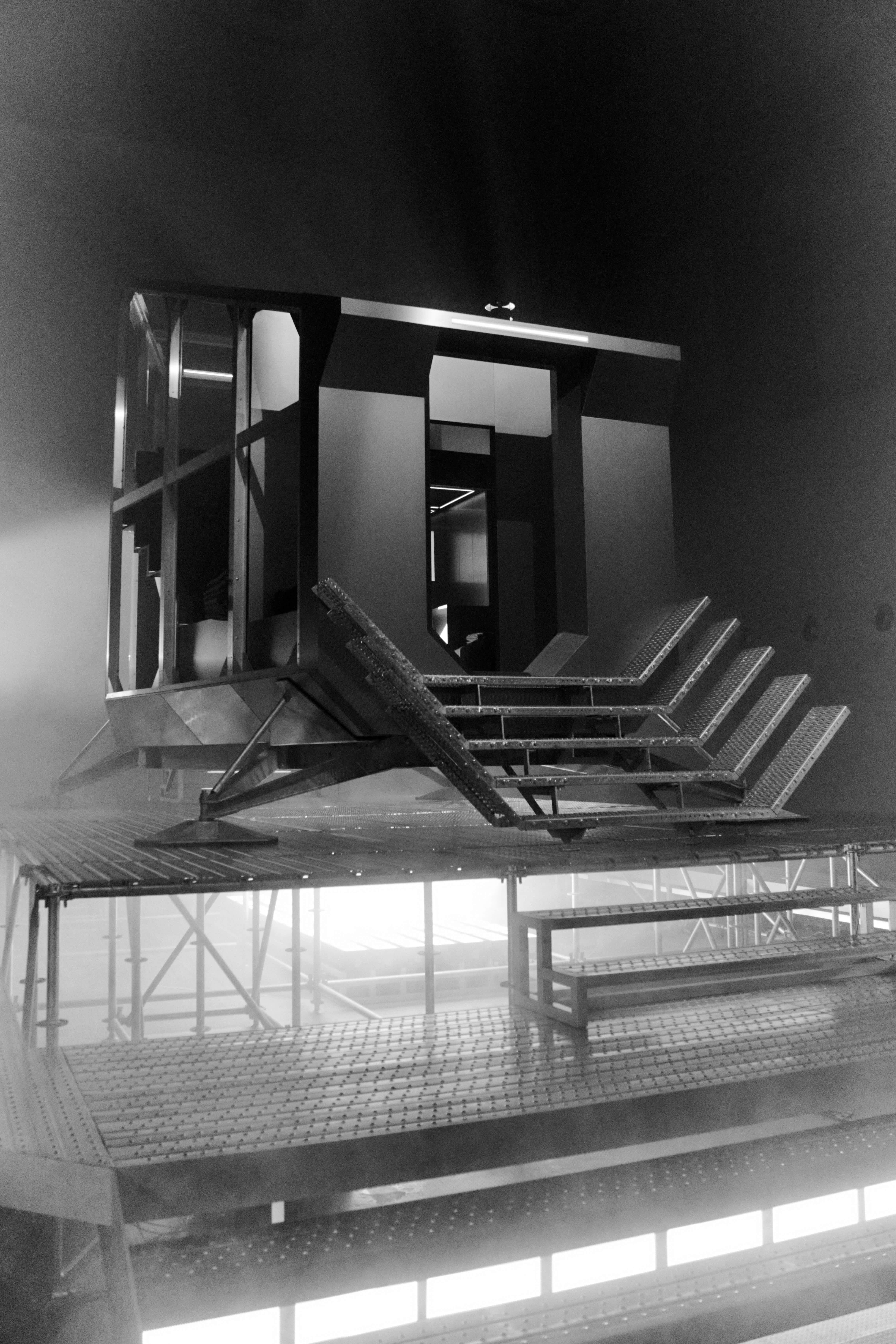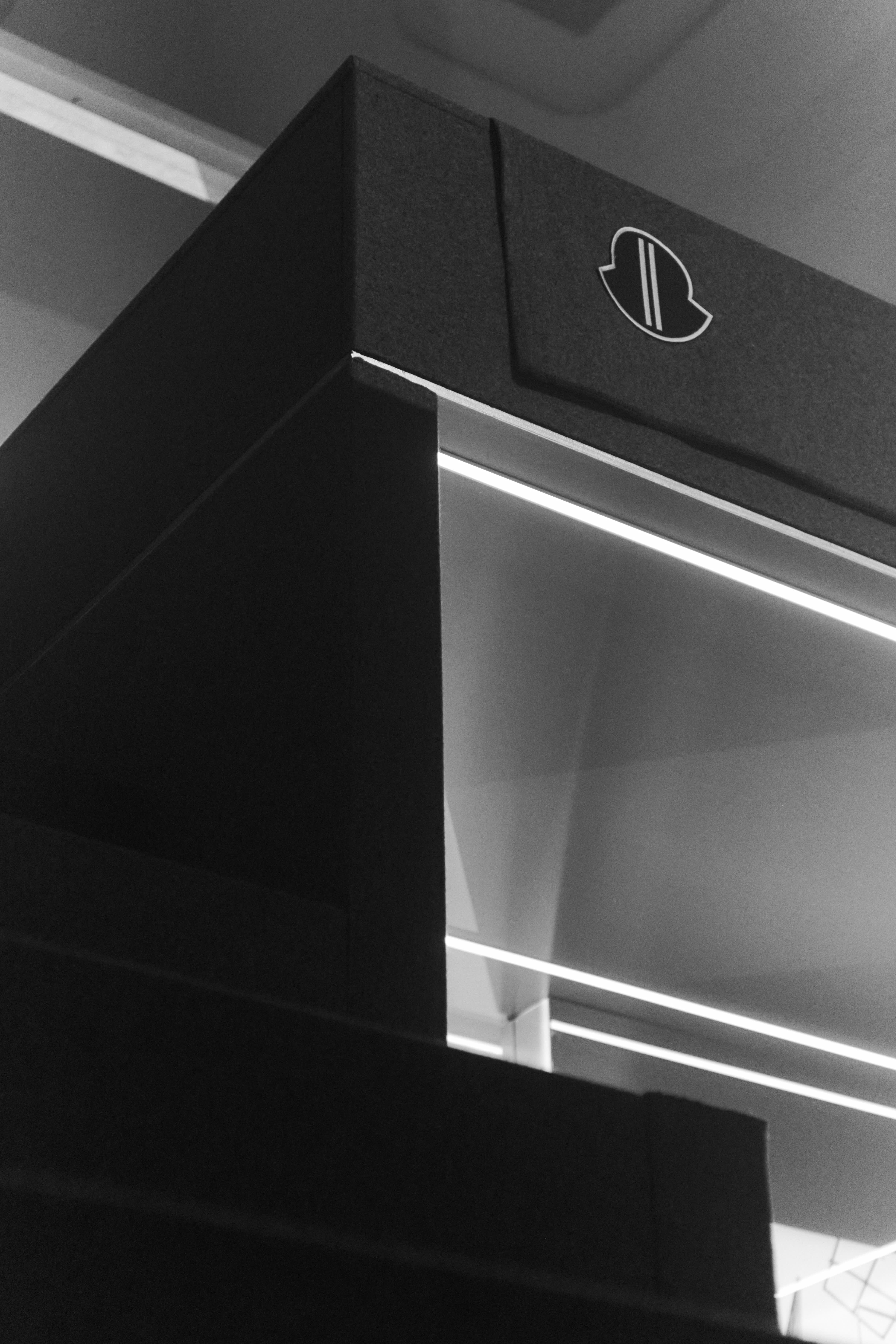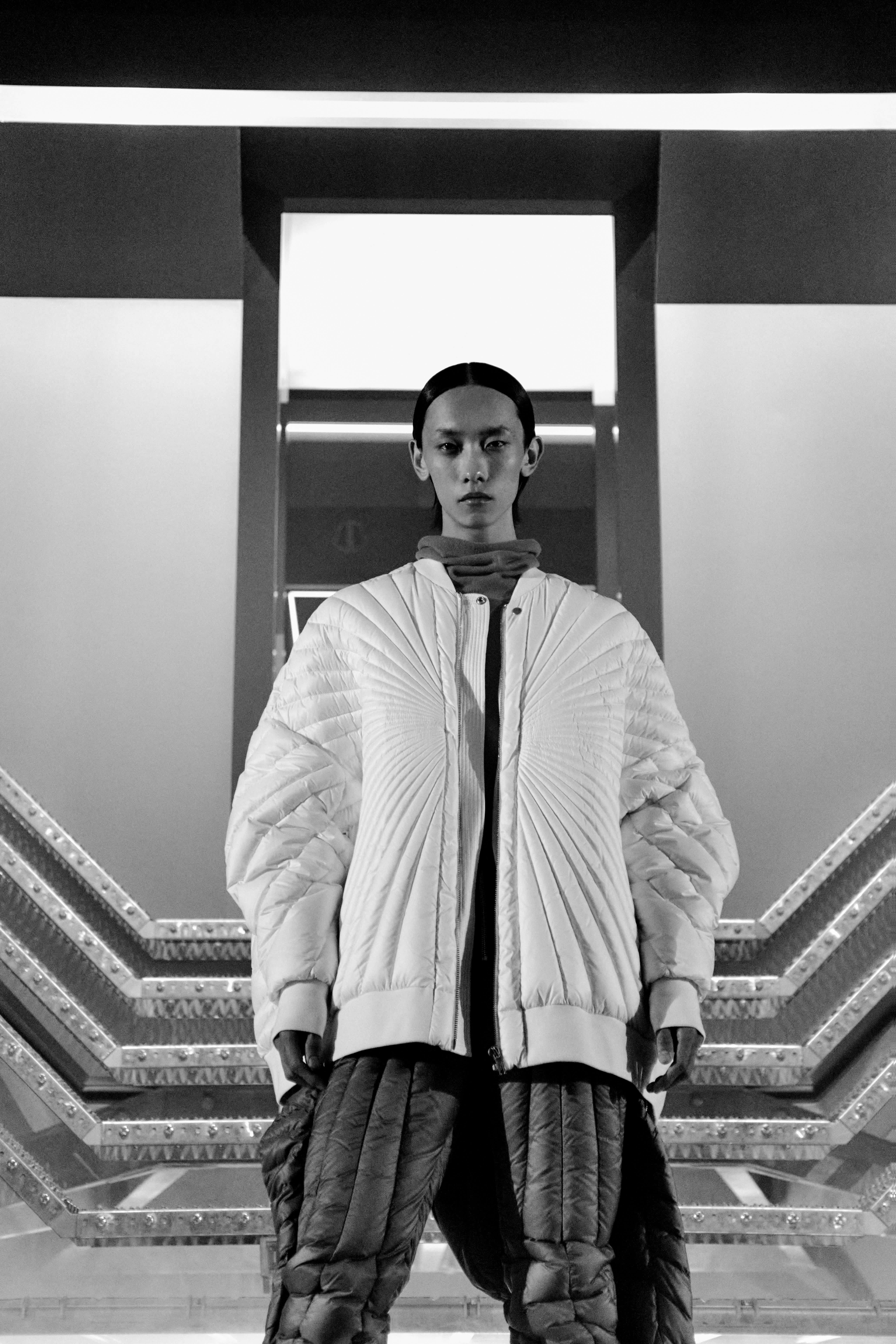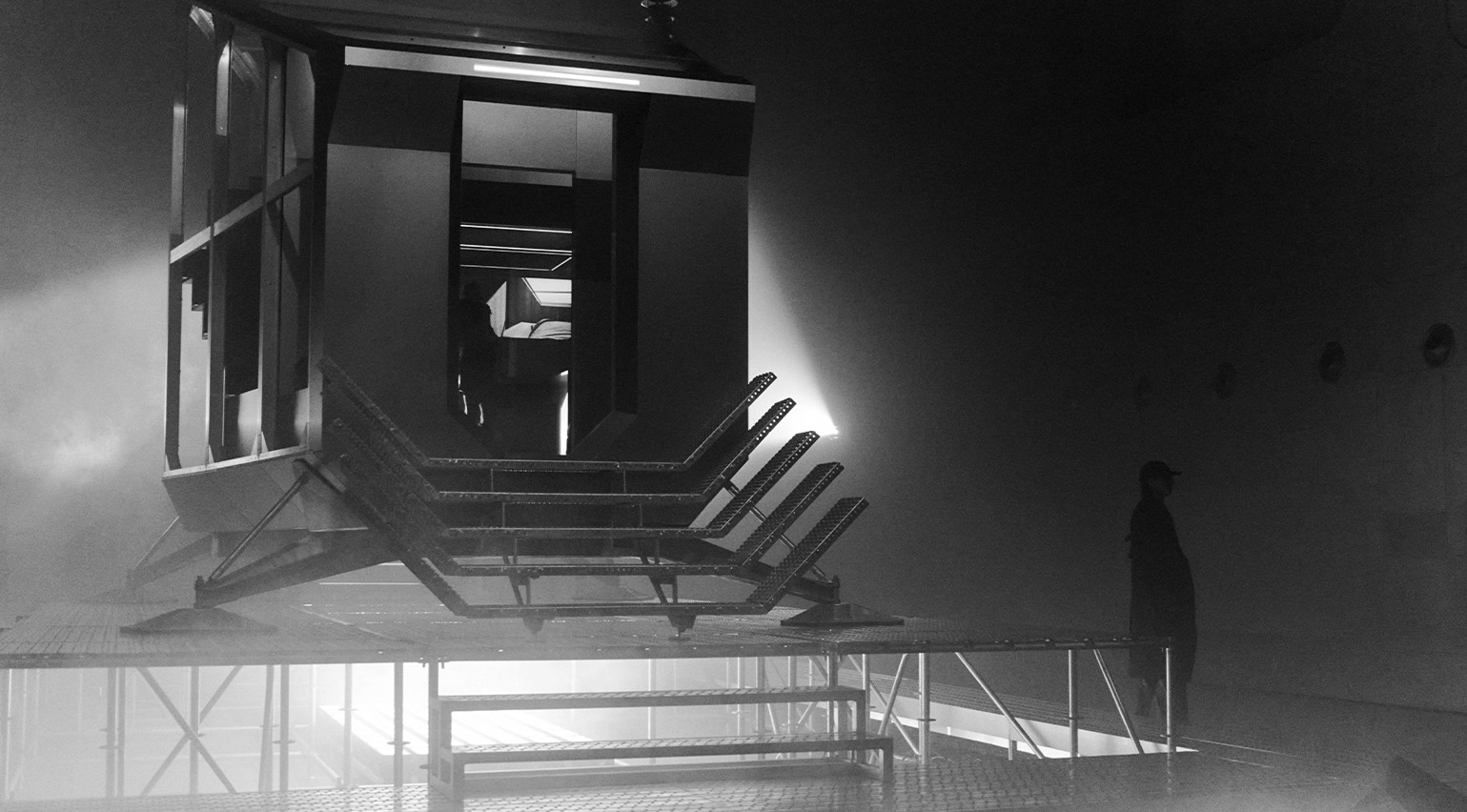
The American fashion designer Rick Owens is known for operating at the extremes. Obsessed with the dark and the monolithic, his distinct aesthetic often sees the body distorted, turned upside down, sprouted with prosthetics, or strapped with wadded structures he calls ‘duvet donuts’. And earlier this summer he hosted perhaps the blockbuster runway show of the year: his take on a Hollywood epic, complete with a hundreds-strong ‘white satin army of love’ which marched around the forecourt of the Palais de Tokyo, some hanging from enormous scaffolding structures, amid plumes of smoke.
Revealed today, on Halloween – a date no doubt noted by fashion’s so-called prince of darkness – Owens explores the idea of ‘extremes’ in his latest collaboration with outerwear behemoth Moncler. Titled by the designer as ‘another Moncler + Rick Owens living project’, it follows a customised bus (designed for touring Land Art installations) and an isolation sleeping chamber (‘it ended up in my house,’ says Owens), which both came complete with matching wardrobes to wear in these ‘personal environments’. The latest edition is a ‘mountain refuge’, created alongside Hugh Broughton Architects, a London-based agency known for its extreme-condition structures (they include the Halley VI British Antarctic Research Station on the Brunt Ice Shelf and the redevelopment of the Scott Base in Antarctica).
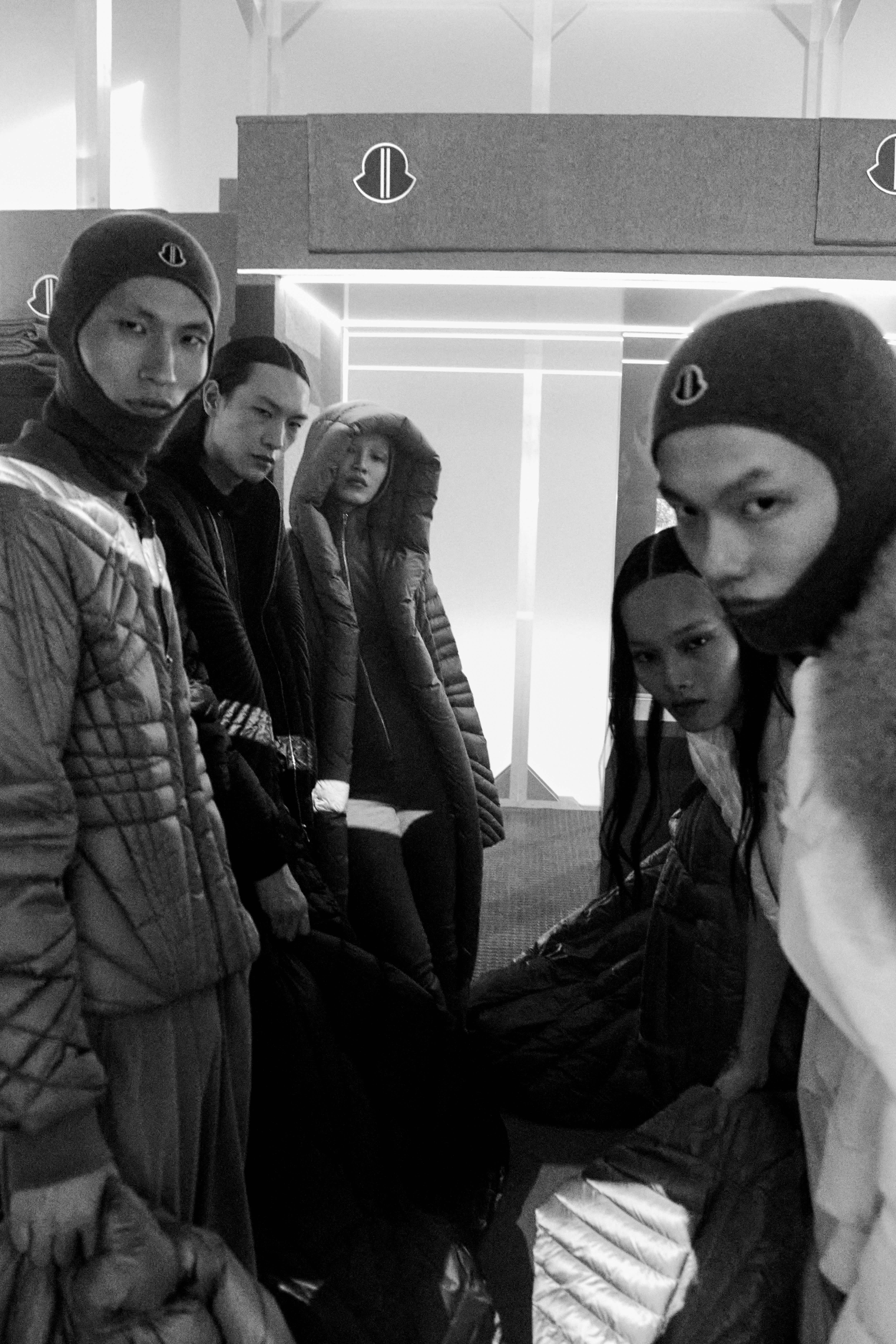
The idea for the project came from a home in the French Alps owned by the family of Owens’ wife, Michèle Lamy, ‘the Hun’ (‘I call her “the Hun” because she is a beautiful marauder, taking what she wants and leaving wreckage behind her,’ says Owens). Designed by French architect Charlotte Perriand, the Lamy family lodging is here transformed into a surreal demountable refuge in stainless steel, which looks to have emerged from the set of a science-fiction movie (or, indeed, from the landscapes of outer space). Balanced atop legs which can be adjusted for uneven terrain, the sharp, brutalist design features a series of dramatic treadplate steps (angled upwards at each side), while the door doubles as a protective airlock.
Indeed, the refuge is not simply for show: fully functional, it features a monocoque shell with 20 thermally insulated panels, photovoltaic roof panels, ground-based solar arrays and a roof panel, allowing for what Owens calls ‘complete energy autonomy’ (meanwhile on-board battery arrays allow power to be stored for ‘long-term use in remote locations’). A sustainable water system filters snow, while also reclaiming waste ‘greywater’. Heating comes from both a log-burning stove and electric heaters. In short, it offers everything you need for shelter in even the most extreme of surroundings.
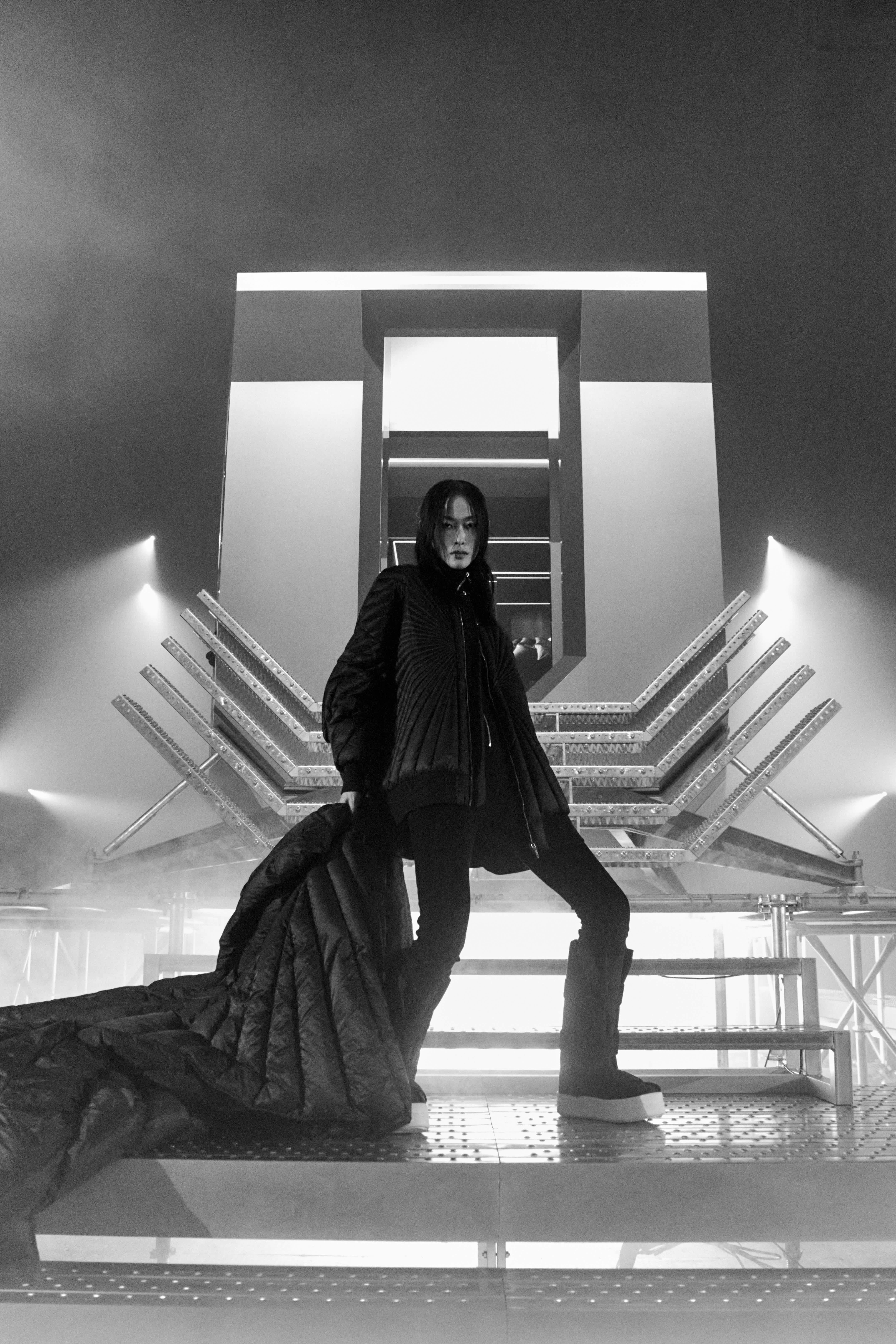
It is an approach no doubt inspired by Moncler’s 70-year history, which began in Monestier-de-Clermont, a commune in the French Alps. There, founders André Vincent and René Ramillon sought to create a quilted sleeping bag to protect mountaineers against the elements while climbing up the area’s snowy peaks. Owens’ mountain refuge is the latest evolution of this project, which despite its high-tech specifications remains rooted in the idea of personal protection and warmth. As such, the interior features Moncler duvet nylon and felted wool blankets ‘a nod to Joseph Beuys, who was my first art hero 50 years ago’.
The accompanying clothing collection follows a similar vein, comprising dramatic quilted jackets and trousers, alongside cotton underlayers which sit flush to the body. ‘It’s based on soft cotton longjohns layered under duvet bodysuits that zip into sleeping cocoons for hibernating in a felt and duvet-lined cave,’ says Owens.
Moncler + Rick Owens clothing collection launches today (31 October 2024) in stores and online.
